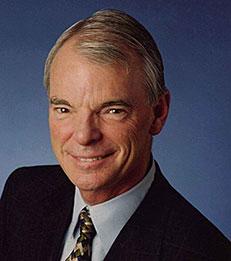Opinion
Labor’s Digital Displacement
—


The world we are entering is one in which the most powerful global flows will be ideas and digital capital, not goods, services, and traditional capital.
By A. Michael Spence
Digital technologies are once again transforming global value chains and, with them, the structure of the global economy. What do businesses, citizens, and policymakers need to know as they scramble to keep up?
Digitally enabled supply chains initially increased efficiency and dramatically shortened lead times. Capital was mobile; labor less so. Economic activity (production, research, design, etc.) moved to any accessible country or region that had relatively inexpensive labor and human capital. With only a slight lag, complexity became manageable, and global supply chains’ linear model (something produced in country A is consumed in country B) gave way to a more complex model with more fragmented but more efficient supply networks.
Meanwhile, a dramatic shift occurred on the demand side, as emerging economies grew and became middle-income countries. Developing country producers, who in an earlier era accounted for a relatively small fraction of global demand, became major consumers.
Read full article as published in Project Syndicate
___
A. Michael Spence is the William R. Berkley Professor in Economics & Business.
Digitally enabled supply chains initially increased efficiency and dramatically shortened lead times. Capital was mobile; labor less so. Economic activity (production, research, design, etc.) moved to any accessible country or region that had relatively inexpensive labor and human capital. With only a slight lag, complexity became manageable, and global supply chains’ linear model (something produced in country A is consumed in country B) gave way to a more complex model with more fragmented but more efficient supply networks.
Meanwhile, a dramatic shift occurred on the demand side, as emerging economies grew and became middle-income countries. Developing country producers, who in an earlier era accounted for a relatively small fraction of global demand, became major consumers.
Read full article as published in Project Syndicate
___
A. Michael Spence is the William R. Berkley Professor in Economics & Business.
